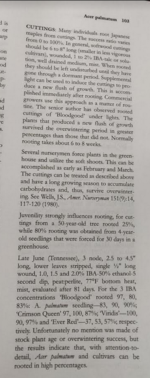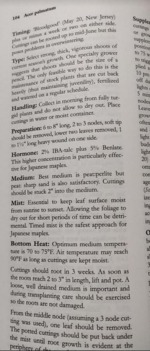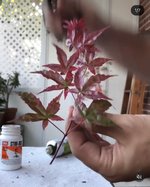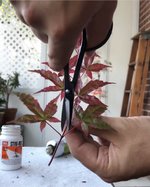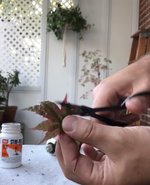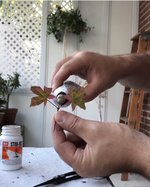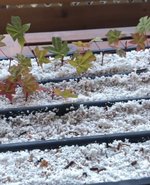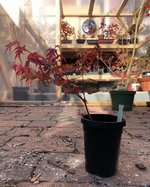The misting is at regular intervals to allow for air circulation. I get it now. Also some of my cuttings are wilting but others are looking lush. The humidity dome is not a good idea fir people in climates like mine, its like i was steaming the plants alive. Even in the shade. So i suggest people who are failing to try rooting atleast a group of cuttings without any sort of humidity system. Youll cook your plants slowly and itll over stress them. I have silver birch cuttings which are behaving in the same manner. Some are wilting slowly while others seems fine. It is very exciting and i will post a picture update very soon. [emphasis added]
You're not in a position to be making any suggestions.
I know you are not going to take this well, but i'm going to try to help you anyways: there are way too many things you've done wrong for you to be able to identify a single variable that is causing your failures. You've skipped ahead to blaming environment (humidity), but your procedure is totally off.
Starting the cuttings on the right foot (see below) is the easiest thing to control, and probably the most important. To illustrate that point, consider that when i've run out of space in my propagation house, for fun i've planted cuttings in my vegetable garden with no humidity or mist, and success rates have been acceptable. This is not something I recommend doing, but again it shows the importance of good, clean, and confident technique and procedure.
Here are some annotations to accompany the attached images:
1 - Choose your branch. Perform the 'snap test'. You want to get a new shoot that 'snaps' (as opposed to flexing/bending). The shoot should 'snap' around the middle (the tip might still flex/bend, and the base might break). I take my cuttings as soon as they start 'snapping'. This is mid-May in eastern Canada. I take my branches early in the morning, before sunrise. Normally i water my trees in the morning, but the day before I take my cuttings I water my trees around 1pm. I don't know if this makes a difference, but somebody told me it does and i have not had any reason to question it. My parent plants are fertilized heavily (at the very upper limit of what is reasonable) as of early spring. I also don't know if this makes a difference, but somebody told me it does and i have not had any reason to question it. A lot of people dream of owning 1 big parent plant from which to take cuttings forever. This is a false hope, because juvenility is an important factor. My parent plants are always 3-5 years old, and are constantly rotating. This process is also important because it also allows me to select the parent plants with the best traits generation after generation.
2 - I take 1 internode with a stem long enough to bury 3-5cm in the substrate. Some people take 2 internodes, because they like to bury 1 node in the substrate. I've done both. They both worked equally for me, so i stopped burying nodes: a node buried is a cutting lost.
3 - This is the length I take
4 - Nowadays i use a grafting knife to cut/shave the base and expose cambium. In the image I am using scissors, but i prefer a grafting blade. I make 2 back-to-back cuts, as you would for a scion graft (I'm not going to explain scion grafting to you, and please don't go around saying it is undocumented LOL. Just google it!)
5 - I remove the leaf lobes.
@Bonsai Nut explained the importance of humidity above. The reason for removing leaf lobes also has to do with reducing the rate of transpiration. You want as many factors as possible on your side in this race against the clock.
6 - I use 0.8% IBA rooting hormone. I also apply liquid cut paste to the tops. Some people don't, i do. Again, you want as many factors as possible in your favour.
7 - I place the cuttings in well-rinsed and well-watered substrate. Do not water after inserting cuttings because you will wash away the hormone. After this point I am misting so frequently that I don't have to water the substrate for 3-4 weeks (more than enough time for the hormone to do its job I think). My official recommendation for substrate is 3 parts perlite, and 1 part coco fibre husk (or pine bark). Use small particles, but not dust. In reality, i use whatever substrate happens to be closest to wherever i am standing. That's a privilege you earn after doing a few thousand of these per year for consecutive years. I'd start with perlite and coco husk or bark before trying anything else.
8 - This is a picture of a set-up i used to use at home while training with my teacher at his facility. That's a $29CAD 'mini greenhouse', with a $20CAD cool-mist humidifier. I would say that that's the bare minimum if you're semi-serious about this. I added the orbit misting nozzles (which you can see in the photo), connected to a hose timer and my garden hose. I forgot how long i was misting them, but it was something like 15 seconds every 10 minutes. You can do this by hand. I usually kept the door open and was able to keep humidity about 80-99% anyways. This tent received morning sun (sunrise to 11am), and was in shade for the rest of the day. Wetting the floor beneath the tent or placing a tray of water on the floor can help if you're having a hard time keeping humidity up. Bottom heat (see
@leatherback's post) can help, but it's not necessary. Having it will be another factor on your side.
9 - Here is what they can look like by July or August of the same year (2-3 months post-cutting). I repot mine. I
do not recommend that you repot yours. It is much safer to leave them in the tray, and repot in late winter/early spring the following year (9-10 months later). Winter protection is critical.
10 - Here is what they can look like in November (6 months post-cutting), best case scenario. Most of them will not push new growth like this, and that's fine.
Use sterilized tools and work area. re-sterilize in between parent plants. Use 1 tray/pot per parent plant.
To repeat what i said earlier in this thread: there are many factors and variables to control. You do not need all of them to be perfect, but when you deviate success rates drop.

